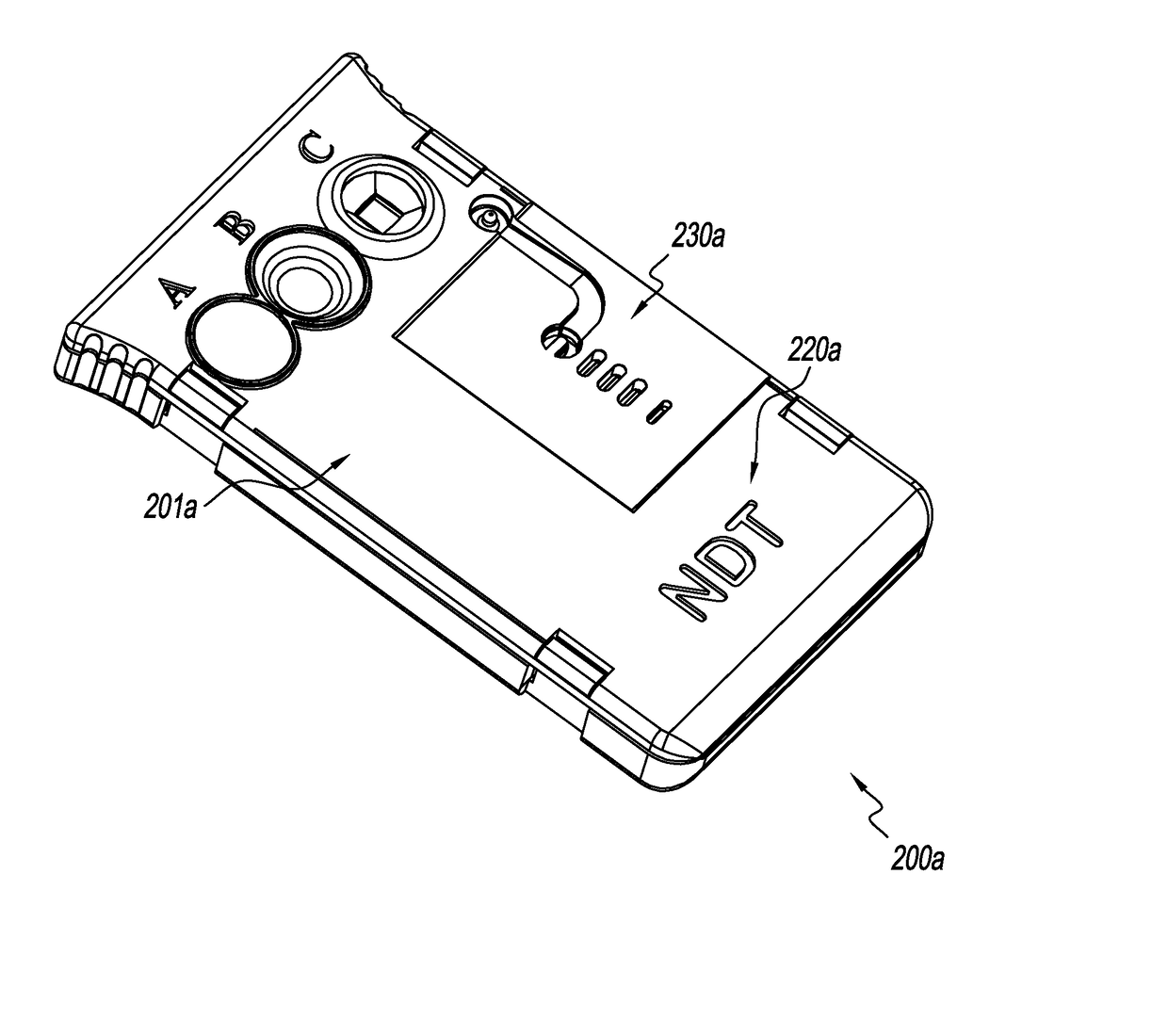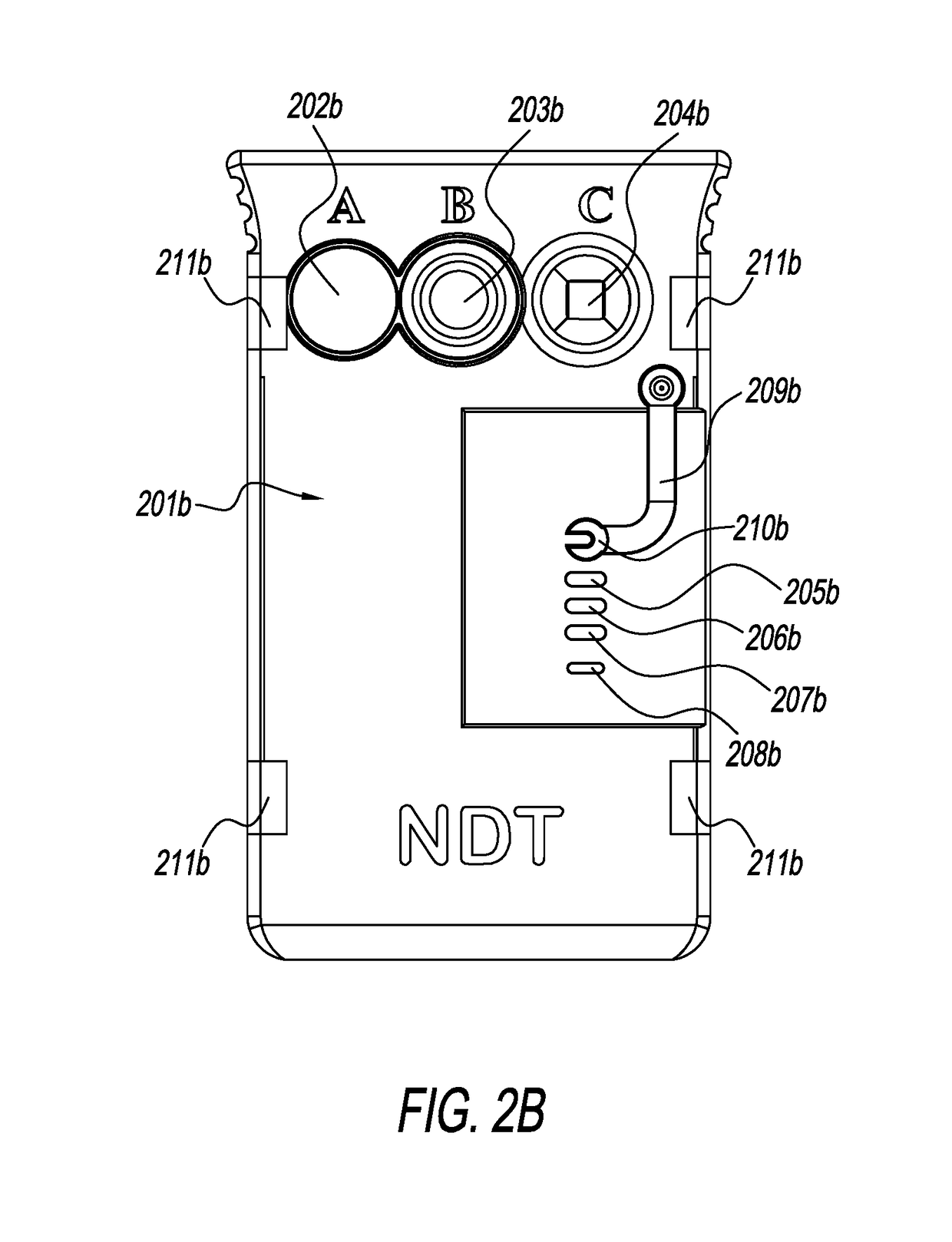System for chemiluminescence-based detection of methicillin-resistant staphylococcus aureus
a technology of staphylococcus aureus and chemiluminescence, which is applied in the field of system for chemiluminescence-based detection of methicillin-resistant staphylococcus aureus, can solve the problems of lack of sensitivity and/or specificity, unsuitable for many settings, and complex nature, and achieve the effect of convenient operation
- Summary
- Abstract
- Description
- Claims
- Application Information
AI Technical Summary
Benefits of technology
Problems solved by technology
Method used
Image
Examples
Embodiment Construction
[0035]The detailed description of the present disclosure will be primarily be, but not entirely be, limited to subcomponents, subsystems, and sub methods of detecting Methicillin-resistant Staphylococcus aureus (“MRSA”) in a human using chemiluminescence. Therefore, although not described in detail here, other essential features which are readily interpreted from or incorporated along with the present disclosure shall be included as part of the present disclosure. The disclosed specification provides specific examples to portray inventive steps, but which will not necessarily cover all possible embodiments commonly known to those skilled in the art. For example, the specific invention will not necessarily include all obvious features needed for operation, examples being a battery or power source which is required to power electronics, or for example, a particular antenna design that allows wireless communication with a particular external information display device. The invention in...
PUM
| Property | Measurement | Unit |
|---|---|---|
| width | aaaaa | aaaaa |
| width | aaaaa | aaaaa |
| thickness | aaaaa | aaaaa |
Abstract
Description
Claims
Application Information
 Login to View More
Login to View More - R&D
- Intellectual Property
- Life Sciences
- Materials
- Tech Scout
- Unparalleled Data Quality
- Higher Quality Content
- 60% Fewer Hallucinations
Browse by: Latest US Patents, China's latest patents, Technical Efficacy Thesaurus, Application Domain, Technology Topic, Popular Technical Reports.
© 2025 PatSnap. All rights reserved.Legal|Privacy policy|Modern Slavery Act Transparency Statement|Sitemap|About US| Contact US: help@patsnap.com



